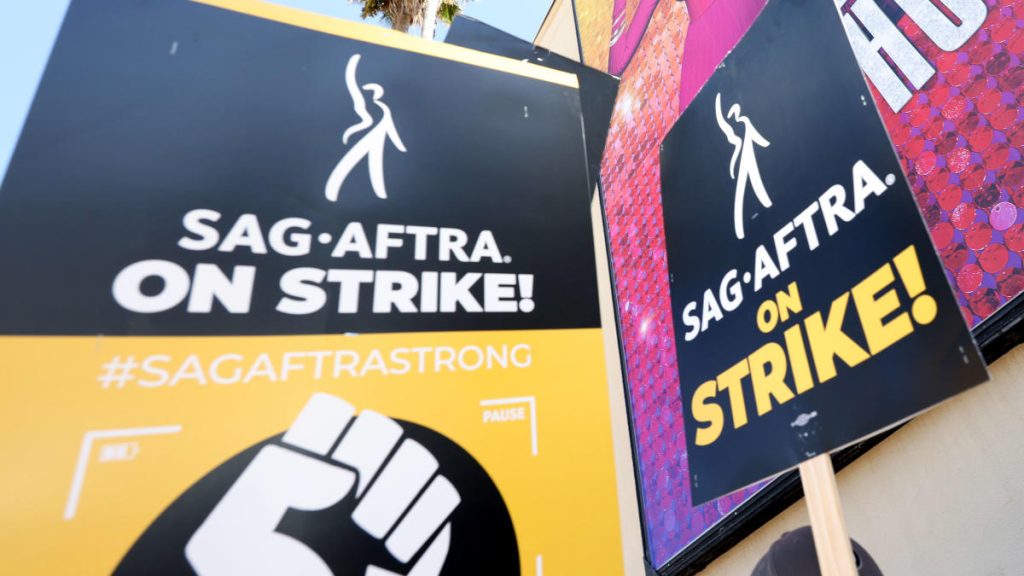While the September jobs report created quite a buzz after adding 336,000 new jobs — nearly twice of what was expected for the month — the prolonged SAG-AFTRA strike has taken a toll on the film industry. The Hollywood strikes have cost the labor market 45,000 jobs.
Yahoo Finance Senior Reporter Alexandra Canal breaks down employment trends in the entertainment industry and when jobs figures could see a pick-up after the resolution of the WGA strike.
For more expert insight and the latest market action, click here to watch this full episode of Yahoo Finance Live.
Video Transcript
RACHELLE AKUFFO: Well, the September jobs report blew past expectations, but even with huge gains, the ongoing strikes took a bite out of numbers. Here with the latest is our very own Alexandra Canal. Hey, Allie.
ALEXANDRA CANAL: Hi, Rachelle. That’s right, the Hollywood strikes registered yet another hit to the jobs report last month as the writers strike reached its conclusion, while the actors remain firmly on the picket lines. According to that data released by the BLS this morning, employment in motion picture and sound recording industries decreased by another 7,000 after falling by 17,000 in August, reflecting the impact of labor disputes. And since the strikes first began in May, employment in those industries has declined by 45,000.
Now, even though we have seen the writers strike end, the actor strike is still ongoing. The union, SAG-AFTRA, they will continue to meet with studios today after restarting negotiations earlier this week. The hope is that a conclusion can be reached soon so Hollywood can get fully back to work, because we have seen a significant impact on the US economy, not just with these job numbers. Milken has estimated that the dual work stoppage will cost the US economy $5 billion plus, primarily due to those lost wages.
And we know that, just beyond Hollywood, there are strikes in other industries, like the auto workers, for example. We do not see the UAW strikes be mentioned in this report, but that doesn’t mean that we won’t see that strike activity reflected in future jobs reports. Remember that the writers strike started in May. We didn’t see that hit until August. So likely more pain to come as these strikes present yet another challenge to this labor market, despite that blowout jobs figure that we did see earlier today.
AKIKO FUJITA: Allie, you know, October was always seen kind of as a deadline, especially for SAG-AFTRA, as well as WGA, to get a deal done so you can salvage the year, so to speak. I mean, we’re at October 6th right now. What’s the expectation here, in terms of how quickly some of the production can bounce back if SAG-AFTRA reaches an agreement?
ALEXANDRA CANAL: I think we’re still going to have to wait until 2024 to really see a lot of our favorite shows come back, to really see the box office return. We’ve already seen that impact happen so far, if you just take a look at some of the top movies that were supposed to come out in the fall. That “Dune” sequel from Warner Brothers that was highly anticipated, that was pushed into 2024.
So even though it’s definitely a good sign that we’re seeing writers come back to work, we still need the actors, as well, to get some of those scripted series up. That being said, we have seen those talk shows, the late-night television return, or they are going to return over the next few weeks. So I think once we see the actors get back on board, it will be pretty quickly that we’ll see some return in activity there. But it’s still going to take some time to get people back to their jobs.
But hopefully by early to mid 2024, we start to get a little bit back to normal, because I know I’m missing some of my favorite shows, and I don’t want to have to wait two or three years to see the next season of “The Summer I Turned Pretty.” I mean, season three, we’ve got to get it going now. So I’m hopeful that we will see a return to work very soon for Hollywood.
